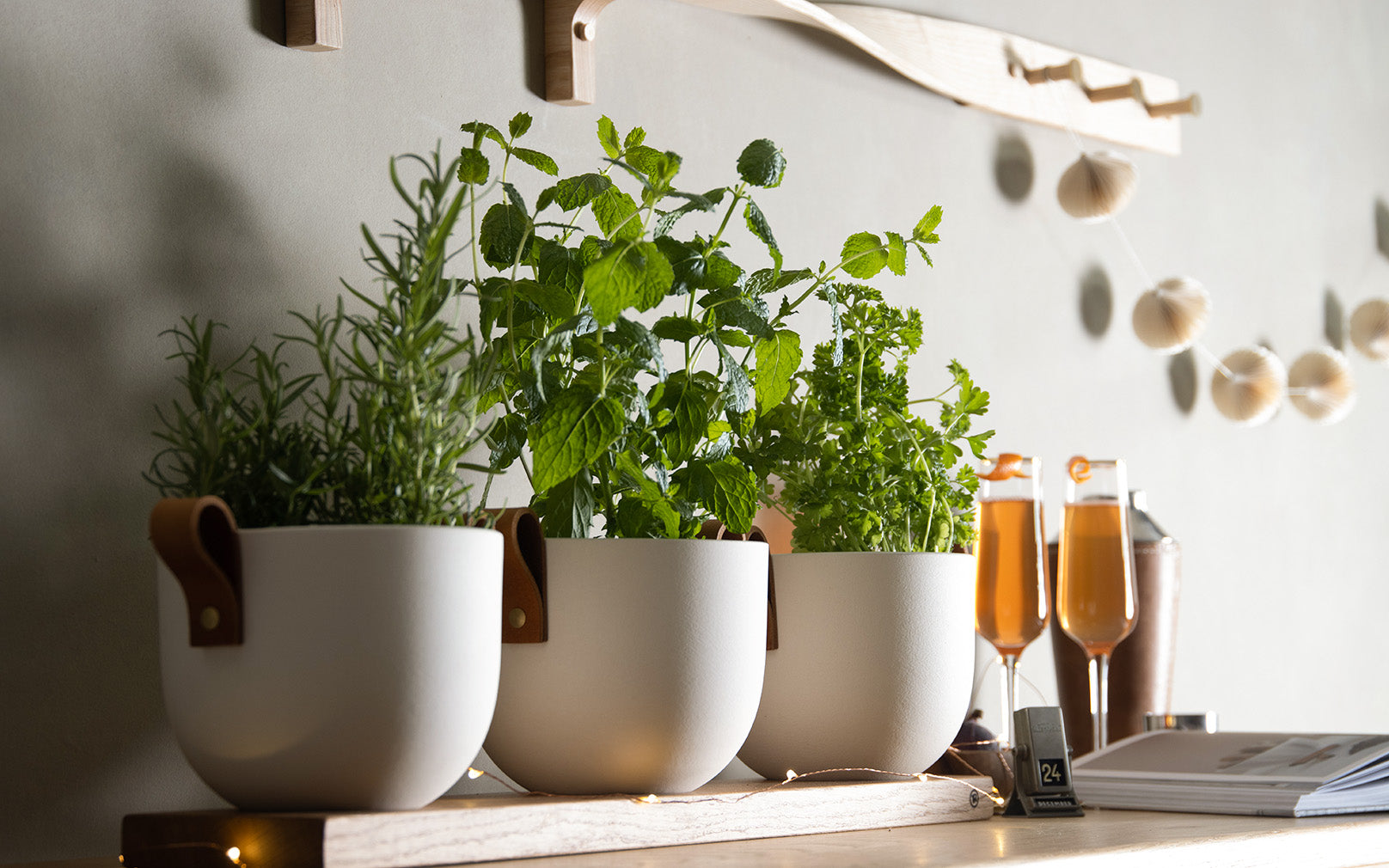How To: Window Side Planting

We’ve all been there, halfway through cooking a delicious meal or shaking up a glorious cocktail and realising there’s not a fresh herb in sight. Whether it’s a punch of uplifting flavour, or an attractive garnish to add to your favourite drinks, our window-side herb growing guide has all the tips to ensure you have herbs at home, year-round.

You'll need
- A trio of planters – we’re using our Maen Trio.
- Organic compost (peat free) – lightweight and porous is best for potting herbs.
- Drainage material - such as perlite or small, clean stones.
- Trowel
- Scissors
- Seed dibber (or an old pencil)
- Packets of seeds
- Small watering can/spritzer
Method
Secure your planter to a solid stand to prevent it from tipping over whilst you’re filling it. If you are using our new Maen Pot Trio, place each planter on the sustainably sourced, oak base and decide which herb you are planting in each pot. For year-round abundance, choose herbs that will thrive in the summer, but still survive in cooler winter temperatures. Perennial herbs such as thyme, basil, rosemary, and parsley are great (and delicious) options.
Prepare your area. Lay down some newspaper in your gardening space to prevent spreading soil and compost on the surfaces and put on some clean gardening gloves. You should also prepare the space you intend on homing your planter - if you are opting for a sunny windowsill, clear any clutter and give the surface a quick dust.


Arguably, the most important step when planting herbs is providing adequate drainage. Herbs don’t like to be sitting in water, so create a layer of pebbles, stones, or pumice in the bottom of your pot, to provide a barrier between too much water, and your plant. You should also mix your compost with a handful of the same drainage material to add small air pockets to the soil, allow the roots to stretch out and prevent root rot.
Next, carefully scoop a few trowels of compost into your pot, taking extra care to not cover the sleek design on the outside. Organic composts are a great choice for herbs, as they are full of a wide array of minerals. This range of materials allow for great aerations, as well as providing plenty of nutrients to help your herbs thrive.

At this stage, if you are planting ready-grown herbs, or repotting pot bound herbs, gently take them out the packet or pot and massage the roots slightly. This will make for an easier transition into their new home. Place herbs and their roots into the pot and scoop in more compost to surround and cover the base of the herb – you want about an inch of fresh soil at the top of the pot.
If you are growing from seeds, add compost until you reach about 1.5 inches from the top of the pot and smooth the surface. Use your dibber, or old pencil, to create shallow holes (how many holes depends on the size of your pot but for our Maen Pot, about 10/15 will fit nicely). You don’t want to overcrowd your pot by sowing too many seeds, but once the herbs sprout and if you think you have got too many, you can always thin them out. Cover gently with more compost, press down and water carefully.


To care for the seedlings, keep the soil moist whilst they germinate. Once sprouted, water your herbs about 1-2 times a week. Herbs need less water in the colder months and may need a touch more hydration in the warmer periods of the year, so it’s often best to trust your judgement. If you’ve planted supermarket herbs, water every 3-4 days but leave the herbs to settle for a few days after the first initial transfer.
Once you have a flourishing, indoor herb garden, the fun begins! With easy access to freshly grown herbs, you can proudly serve food and drinks that feature your homegrown goodness (because we definitely think homegrown tastes best).
Posted: 21.10.21
Updated: 23.04.25